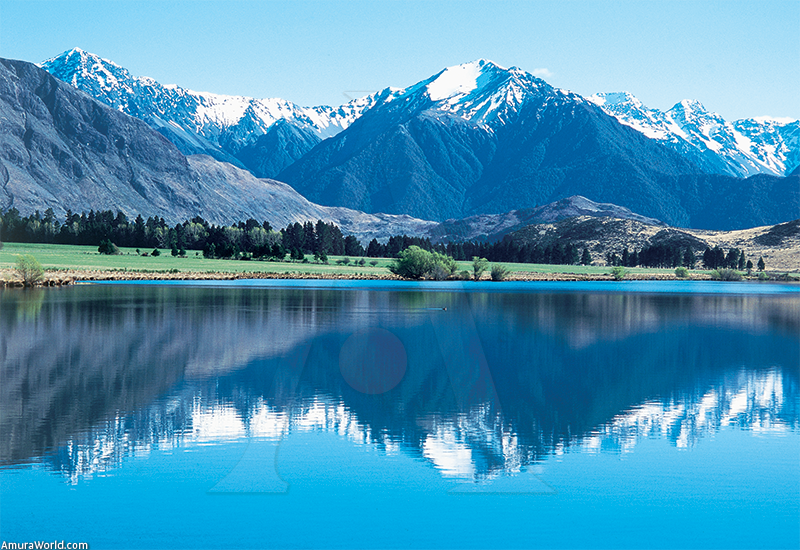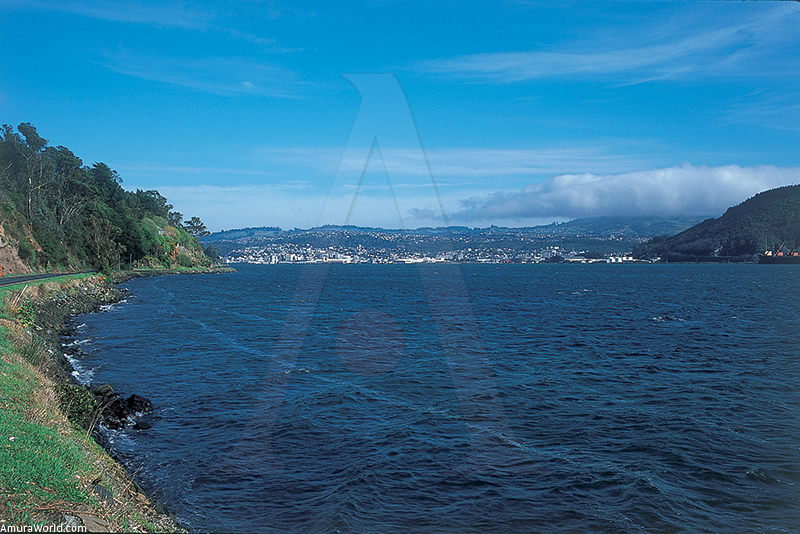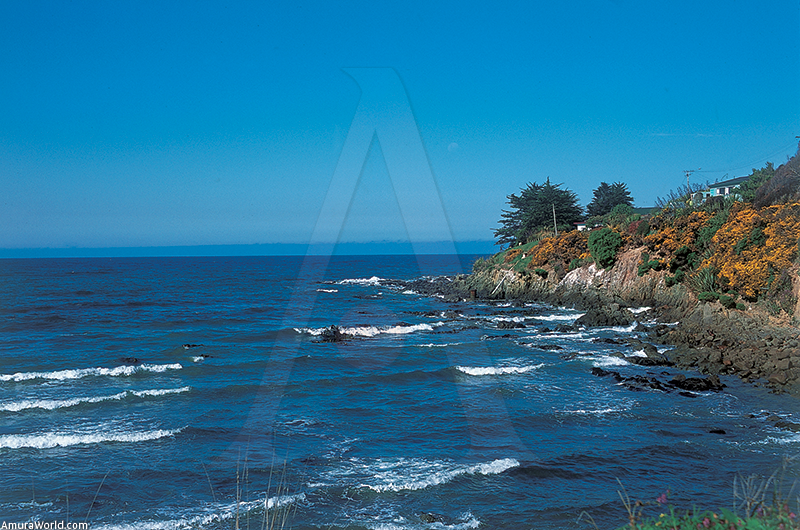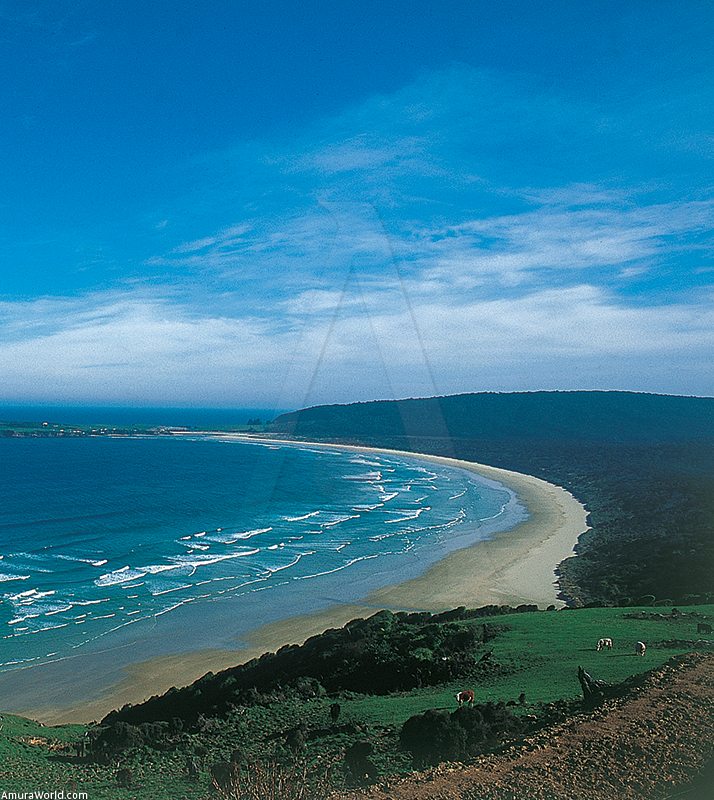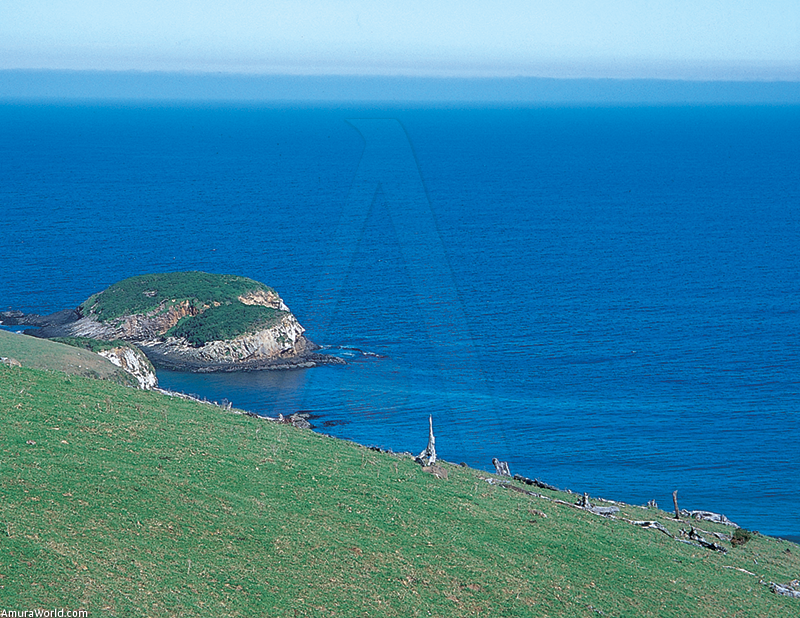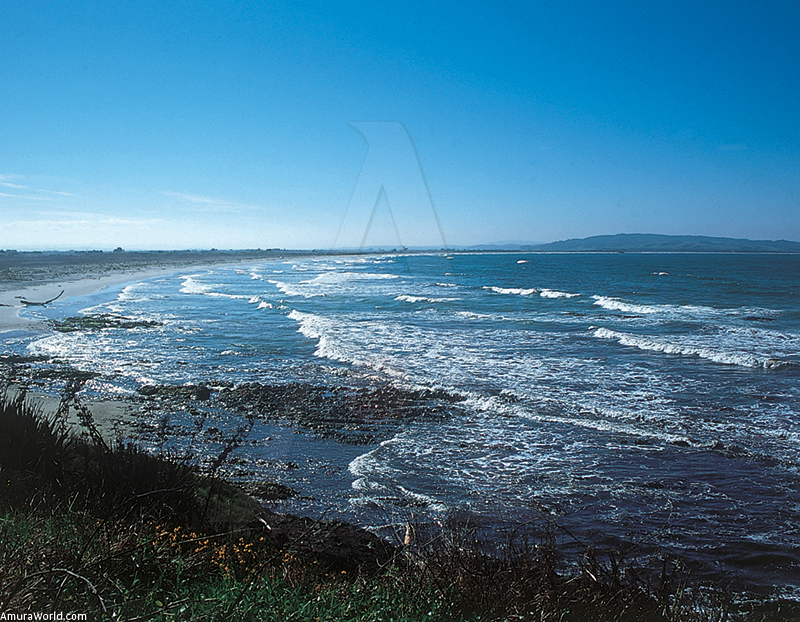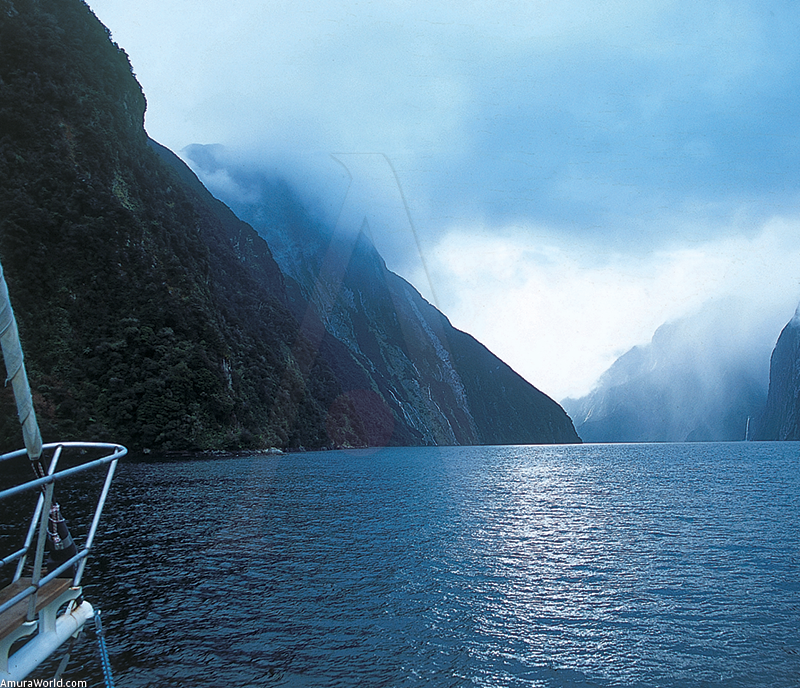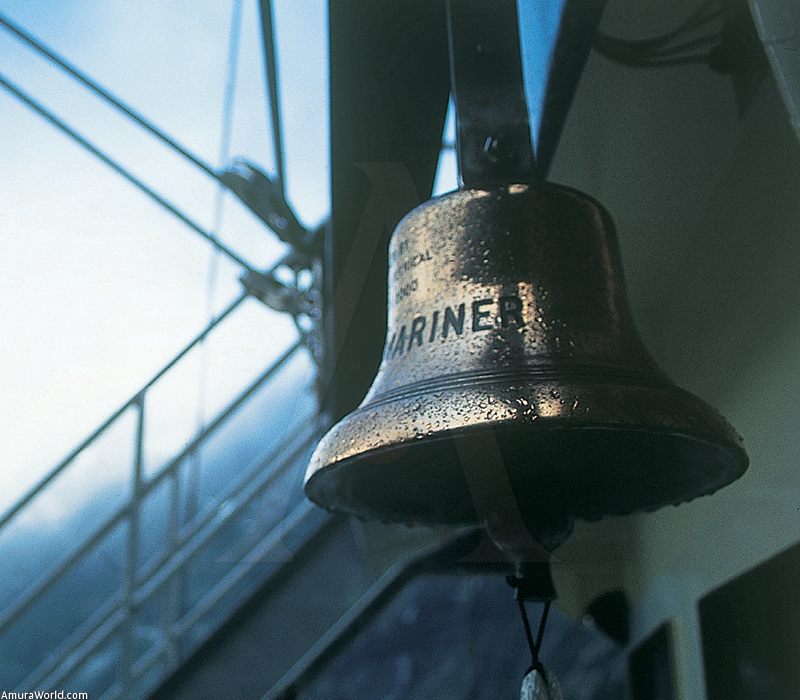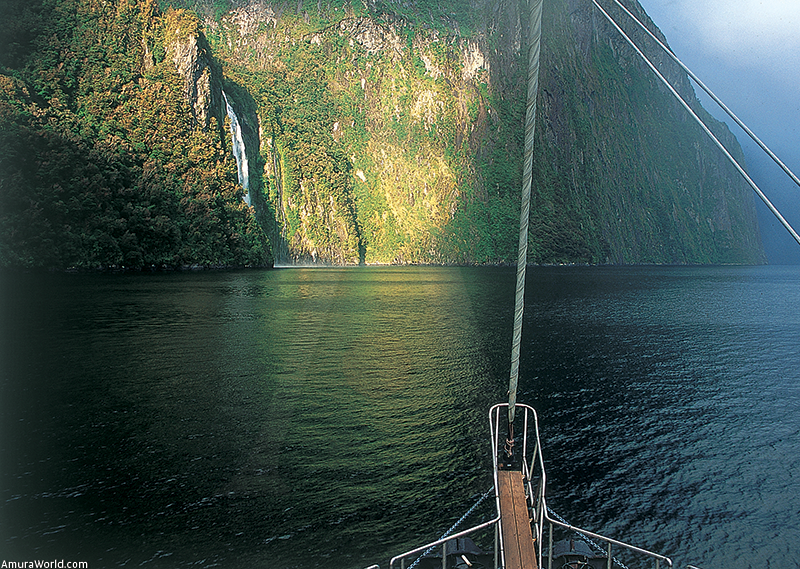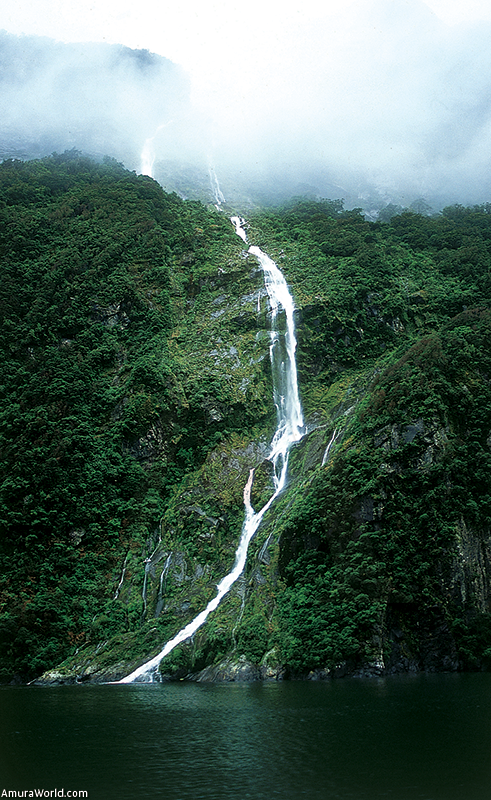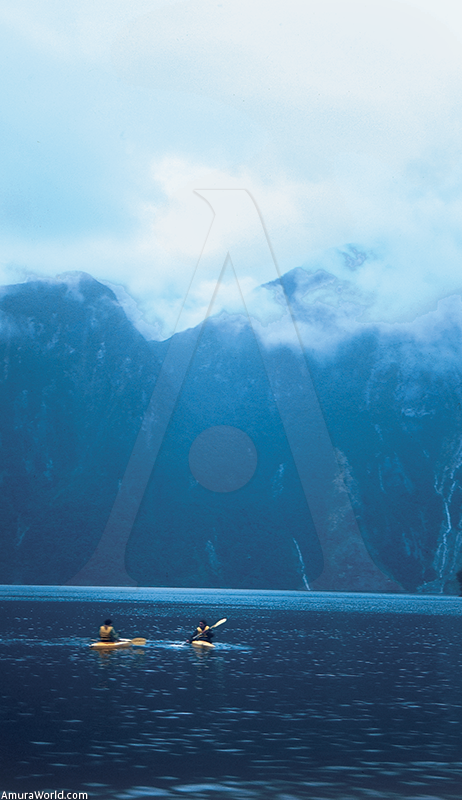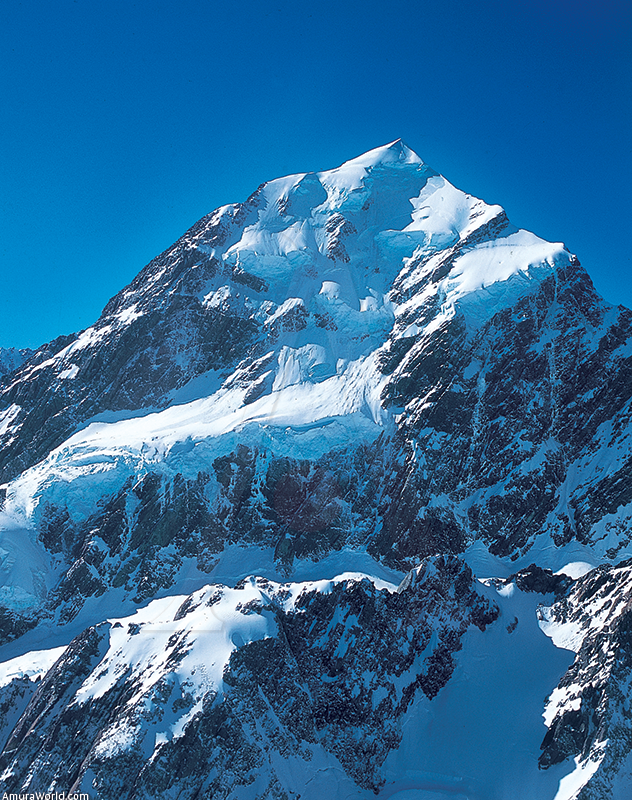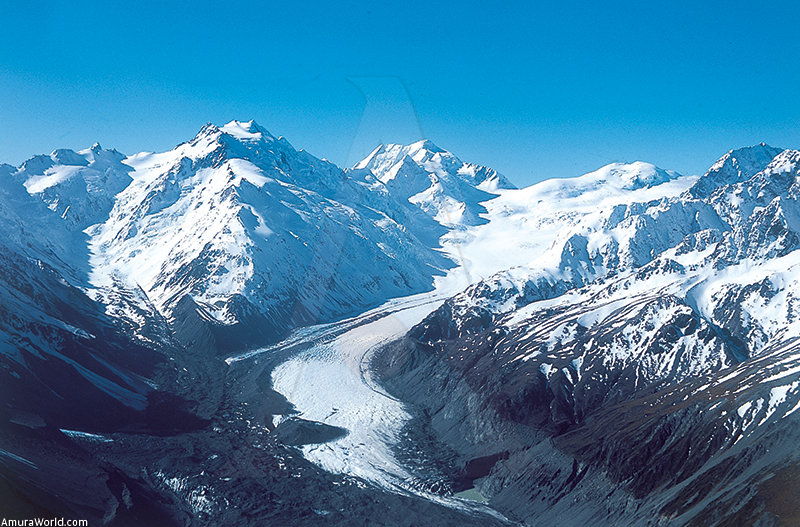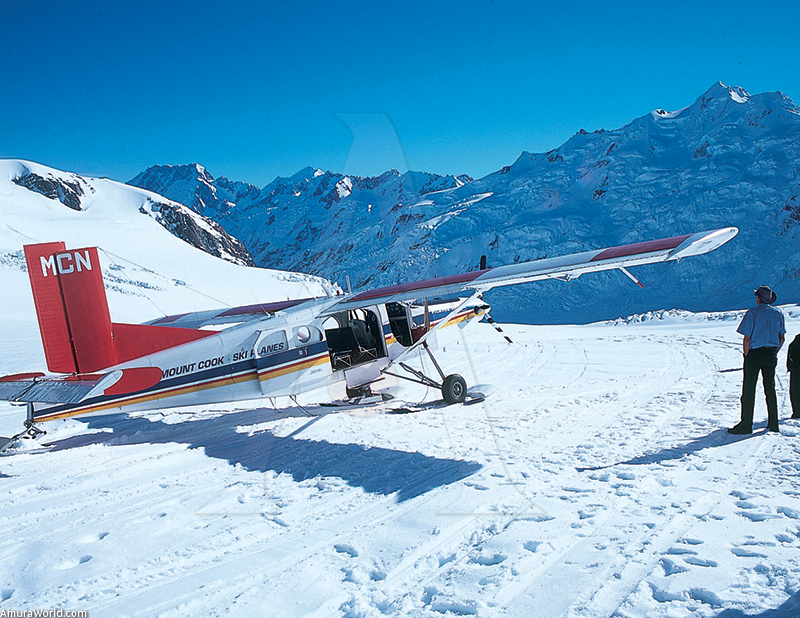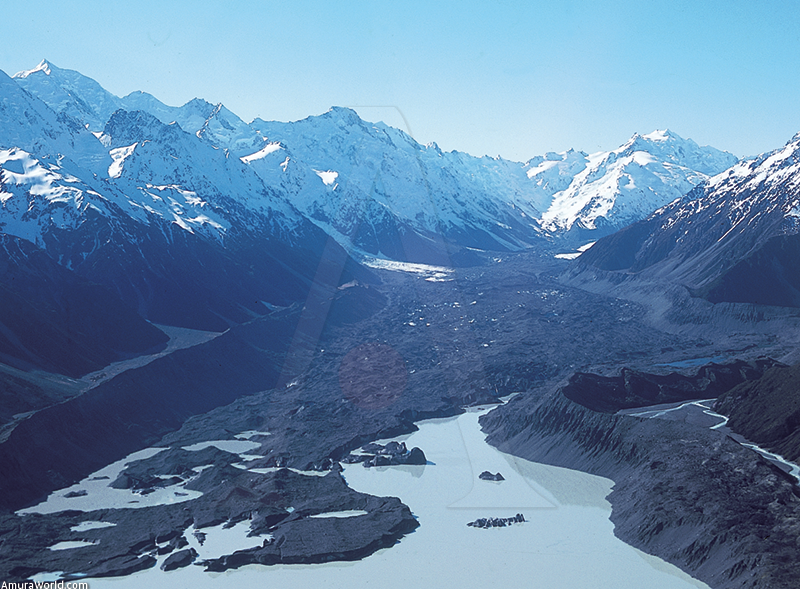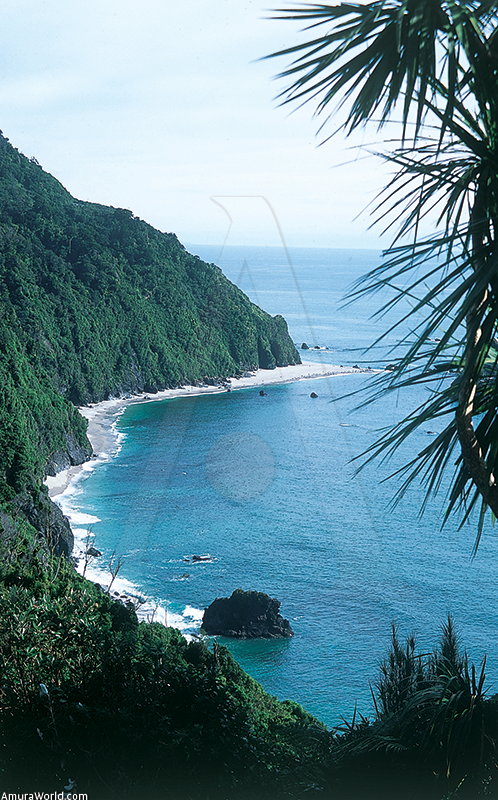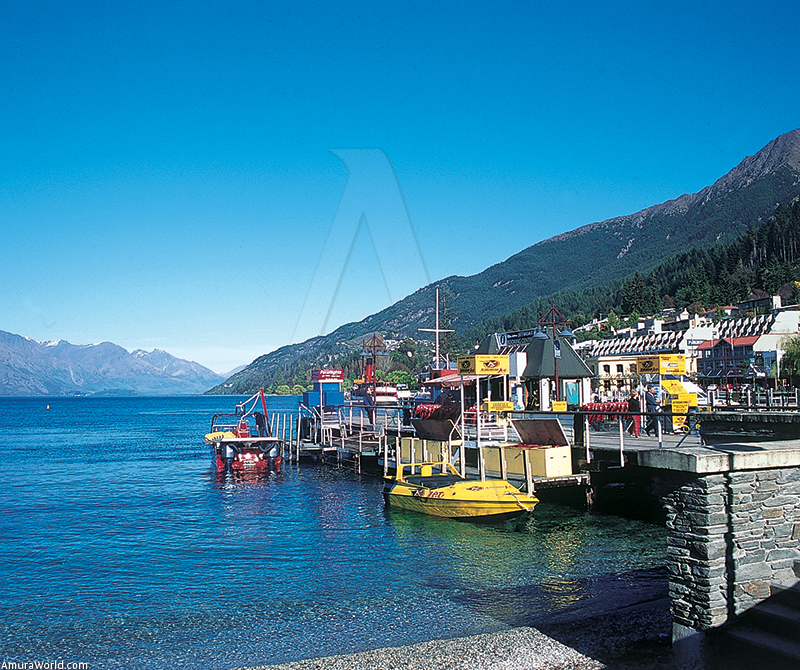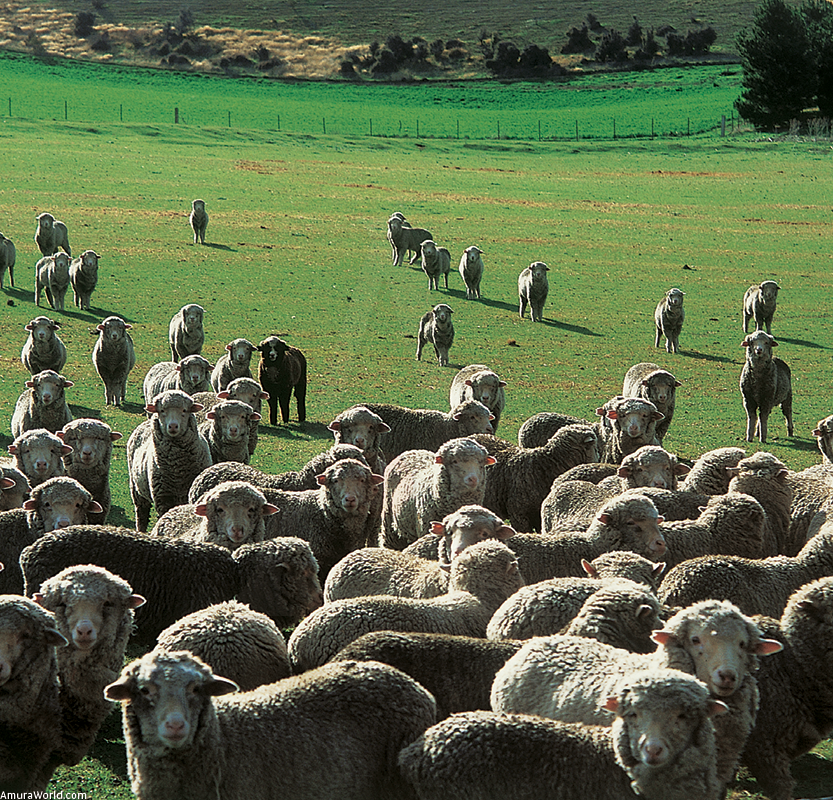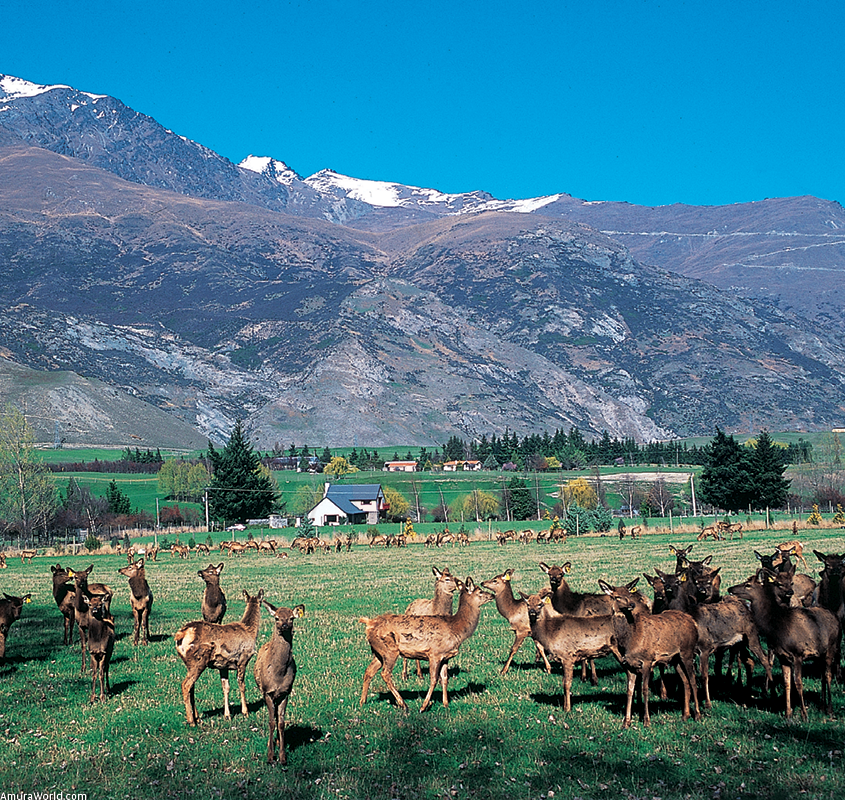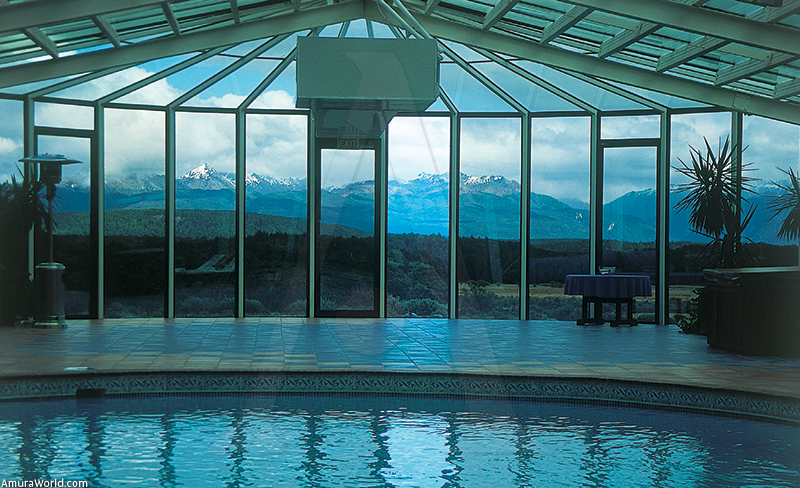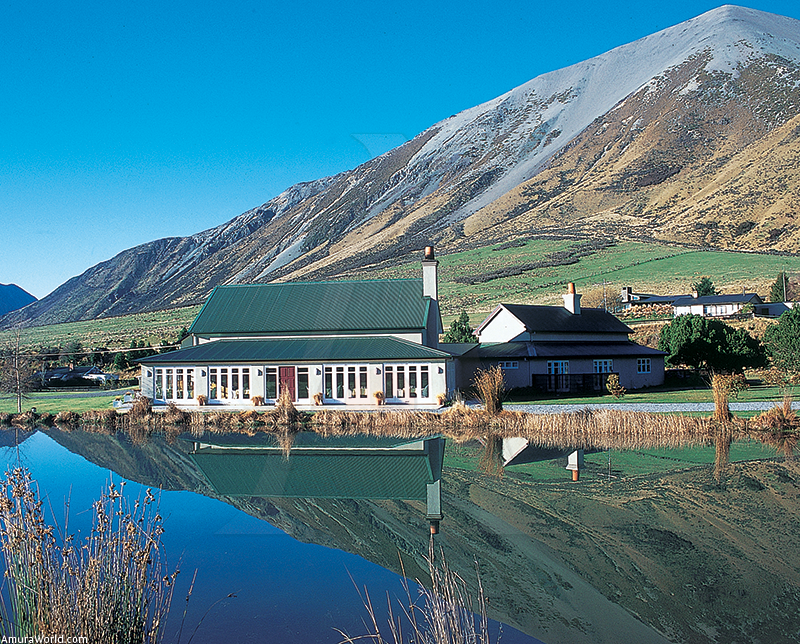New Zealand, from Dunedin to Milford Sound
In the Pacific Ocean, to the south, New Zealand is a strange land of surprising vegetation that consists of two main and various small islands. On the west coast, the flora is typical of humid climates, bringing to mind a tropical jungle, but one that grows at the foot of snow-capped mountains. In the central region there are two lakes with jade or turquoise-colored waters that are surrounded by mountains. Glaciers dominate the dramatic setting, well chosen to film The Lord of the Rings. South Island, the last body of land before the South Pole, is a mystery, where sheep graze, penguins enjoy the icy waters and the stigmas of the Maoris mark the past with their art.
Christchurch
Arriving in Christchurch in September, we encountered cold winds, which prompted us to begin our voyage further south, where our boat awaited. Christchurch is a very pleasant city, with its river and cathedral, its buildings dating from the beginning of the 20th century and its old-fashioned trolley that gives it a nostalgic air. Along the road to Dunedin, we could see that the coast is quite flat.
Dunedin
Dunedin is an extraordinary natural port located at the far end of the bay, an authentic fiord enclosed by the Otago peninsula, which is rich in fauna. Founded by
Scottish immigrants (the name means “Edinburgh” in Scotch), Dunedin was the most important city during the era of the Gold Rush. Later, the first university was
built there and today it is an important university center with beautiful Victorian buildings dating from the end of the 19th century. This amazing city that lies at the foot of the hills also has a whiskey factory.
Staying at The Corstorphine
We stayed in The Corstorphine, a majestic Victorian palace that dominates the port, and the first place we visited was the peninsula, driving along the scenic
highway that follows the coast. That was how we discovered the mysterious Larnach castle, hidden amidst the fog, which was built in 1871 for the extremely
wealthy merchant and politician JWM Larnach, who committed suicide in Parliament in 1898. The tour was especially gratifying for the beautiful scenery, consisting of small bays adorned with houses.
In Taiaroa Head, on the point, is the Royal Albatross Centre, where a large colony of albatross come in September to make their nests on this cliff at the foot
of which algae dance to the rhythm of the waves.
We also saw cormorants and gulls and visited the beach that is home to a colony of yellow-eyed penguins,
that get their name from the yellow feathers around their eyes.
Through the Fiords on The Corstorphine
We set sail on the Corstorphine, which was readied especially for us. It is a boat designed to penetrate the fiords but that can also move drastically on the high
seas. Passing Victoria Channel, bordered by green hills crowned with clouds, we admired the beautiful and peaceful landscapes, the islands and bays located in
the fiord, and finally reached the narrow mouth of the fiord that is delimited by Taiaroa Head. On the east coast, at the foot of the cliffs, we could see a colony of
yellow-eyed penguins and, further on, one of sea lions, before discovering the protected bays limited by Mount Charles, where we started our voyage south.
The sun was shining, the sea was calm, and we soon reached the region of the Catlins, those forestcovered hills that extend down to the sea, creating sumptuous bays once inhabited by Moa hunters.
Now, many of these hills serve as grazing lands for sheep, whose meat is prepared deliciously. Kaka Point marks the end of large Molyneaux Bay, with its small port. Passing Point Nugget, which is dominated by a lighthouse, we found seals, sea lions and yellow eyed and blue penguins.
We then discovered a series of bays (Cannibal, Surat and Jack’s Bay with its blow hole, that shoots sea water into the air), alternating with desolate, white sand beaches and cliffs, the small town of Papatowai, at the foot of the Catlins, that are 700 m (2296.6 ft) high, at the mouth of the Tahakopa River that branches off from the beautiful bay of the same name. The coast is lovely and dolphins frequently accompanied us in the tranquil waters. We saw the Cathedral Caves, accessible only at low tide, deep Porpoise Bay, navigable only in small boats and, passing Slope Point, the southernmost point of the island, we arrived at aipapa Point where, in 1881, the SS Tararua was shipwrecked and only 20 of the 151 passengers survived. This is the end of the Catlins and the beginning of a flat, swampy terrain. We finally entered Invercargill Bay, the country’s southernmost and smallest city and an important center for farmers. This is where we dropped anchor for the night.
The Next Day
We followed our itinerary westward, passing Colac Bay beach, which is famous for surfing. The coast began to rise slightly to form beautiful cliffs in Te Waewae Bay. We saw dolphins and a whale in the distance, and the silhouette of the immense mountains that plunge into the sea, part of the Fiordland National Park, whose highest peak, Tutoko (2746 m / 9009 ft), delimits Milford Sound.
Navigating on the Milford Mariner
The southern coast is impressive because of its forestcovered cliffs covered with ferns and moss. Passing beautiful Bluecliffs Beach the sea is rougher. After following this strange landscape, that seems to be located at the edge of the world, we left the Pacific, entered the Tasmanian Sea and discovered the first fiords:
Preservation Inlet, a series of entryways into the mountains. By then the sky was filled with clouds, a gentle rain was falling, and snow covered the mountain
peaks. We passed one of the deepest fiords, Dusky Sound. We could not explore it because the rain had gotten stronger, but this fiord is very well known because it contains many islands. We followed our route with waves that were sufficiently strong to toss the Mariner as if it were a walnut and at dusk, when the sun lights up the walls of the cliffs, we sailed into Doubtful Sound, finally finding some calm waters. It had been a very rough day, one of defying the sea while we followed the beautiful tree-blanketed coast.
From the peaks buried in the clouds, cascades fall down the sides of the mountains in the fiord. The rain had stopped, some tufted penguins returned to their
nests and a few bottle-nosed dolphins accompanied us.
This fiord was discovered and named by Captain Cook in 1770, who decided not to explore it because there was not enough wind, which made him fear not being able to get out of there. Here, six meters (236 inches) of rain falls every year and that is why, in addition to the cascade, a permanent layer of fresh water covers the salt water, which allows the rays of the sun to filter through and causes the growth of black coral and other organisms, traditionally found at great depth in these shallow waters. We anchored at Malaspina Beach and explored the tree-covered coast in a kayak. Clouds covered the mountaintops, the fiord resonated with the sound of the cascades that fall from great heights and of the shouts of the seals that climbed out of the water. It is an impressive place that transmits a surrealistic sense of peace.
Northward Bound, Towards Port Milford
We awoke to a cloudy morning and, when we left the fiord, the waves awaited us, peaceful and arrogant. Following our route toward the north, we found the
same mountain scenery covered with strange vegetation that is filled with ferns. And the fiords continued: Thompson, Nancy, Charles, Caswell, George, Bligh,
Sutherland Sounds, as if they were mysterious slashes made by a giant who wanted to defy the mountains.
The views are spectacular and the coast is a succession of capes that magnificently mark these entrances.
Finally Mitre Point appears (1692 m/5551 ft), marking the wide entrance to Milford Sound. This fiord, which is 22 km (13.7 mi) long, welcomed us with calm waters, clouds crowning the peaks and the cascades roaring down the rocky walls. The captain of the Milford Mariner is totally familiar with this fiord because it is his base. He showed us its beauties and secrets and continued on until the water of the cascades covered the tip of the boat. The landscape is sumptuous, the most impressive of all the fiords that we had seen up to that point, with a wide variety of cascades, forests covering the hillsides and impressive cliffs. Finally, we reached our goal in the depths of the fiord, tiny Milford Port, where there is a lot of movement because of the many visitors who come here to begin a two-hour tour.
Te Anau
Our car was about to arrive and after saying goodbye to the Mariner, a small boat, and a great navigator, that is admired for its bravery among the waves of the
Tasmanian Sea, wich we had just confronted, we set out en route to Te Anau. The scenery is magnificent, as if out of a fairy tale. There could be an elf concealed
in each of the trees, and certainly ghosts hide in that thick forest that seems like a tropical jungle, with its tree-like ferns and moss, where the mountain peaks
are covered with snow and look like the castle of some legendary knight. Keas, a strange variety of parrots, live in this icy place, where the snow only comes
down to a certain point, leaving the pass open to this cold jungle. Beyond the small town and marvelous Te Anau Lake, where the mountains are reflected in the
tranquil waters, after 25 km (15.5 mi) over a dirt road we arrived at peaceful Takaro Lodge.
In Takaro Lodge
This is not an ordinary hotel: it is reigned over by the elements of Feng Shui. The Spa invites guests to enjoy a full day of relaxation, massages and excellent meals after walks through the woods. Our path took us along the main highway going northward and, when we arrived in Kingston, spectacular Lake Wakatipu came into view. It is a veritable mirror that reflects the mountains and a romantic setting where the lively city of Queenstown, the tranquil town of Glenorchy and
snow-covered peaks over 2000 m (6561.7 ft) high are located. Eichardt’s Hotel, in Queenstown, or the Matakauri Lodge are ideal bases for all sorts of activities,
like skiing, hiking in the mountains, bungee jumping, speedboat tours of the lake, rafting on nearby rivers, canoeing on the lake and enjoying the nightlife and the good food in Queenstown. Our last stop was Mount Cook, the highest peak in New Zealand, 3755 m (12,319 ft) tall and surrounded by many glaciers. From Queenstown to the foot of Mount Cook there are a succession of lakes, valleys and mountains, and each view is more beautiful than the other. We found a dreamy place in Matuka Lodge, where the snow-covered mountains are reflected in the small lake.
The Glaciers as Seen from the Air
Arriving at tiny Mount Cook airport, we got into a small plane piloted by Nick. Almost as soon as we took off we saw sumptuous landscapes that filled us with pleasure.
We flew over snow-covered mountains, where the snow looked like elegant tablecloths adorned with strange folds, and the glaciers showed off their creases
and blue tones and where the gray valleys made patent the elegance of those pristine, white crests glimmering in the light. It is a magnificent world and our emotions peaked when we landed on the Tasman glacier, with its 600 m (1968.5 ft)-thick ice that is moving toward Lake Pukaki. The sun reflects its own image in the ice and snow and the scene of that small plane and us over the snow was unreal. An immense emotion filled my soul.
New Zealand, a Natural Reserve at the South Pole
Our last stop was Grasemere, a spectacular ranchlodge near Arthur’s Pass, where we could see sheep and deer and rest and enjoy the excellent cuisine
before beginning our return trip to Christchurch.
We were on route to Australia. New Zealand had welcomed us with the majesty of its landscapes, where the mountains reach the sea and the fiords surprise with their beauty and the grandeur of the waterfalls. The hills of the east coast are an adventure in peace and the glaciers impress with their mysterious ambiance. New Zealand is the world’s paradise, a natural reserve at the gateway to the South Pole, an enchanting landscape that seems to have escaped from those marvelous tales that fill our imaginations.
Takaro
A Different Kind of Spa for Discovering our Inner Peace
Takaro, surrounded by thousands of hectares of natural forest, is 30 km (18.6 mi) from Te Anau, in southern New Zealand, and is accessible by highway or helicopter. In this beautiful valley, which could be the setting of a fairy tale, the view of the snow-capped peaks of the Kepler Range is an image from which legends are made, and Takaro is the first Luxury Peace Resort to offer its guests an exclusive experience with a flavor of internal peace.
• Elements Chalet: The five chalets, with two suites in each, represent the five elements. They were designed by a renowned expert in Feng Shui and offer guests a unique and relaxing ambiance.
• Spa: Authentic space designed for health and wellbeing. Covered with glass, it features a swimming pool, Jacuzzi, sauna and steam bath. Stress melts away
while you enjoy the setting and the exceptional view.
• Massage: Thousands of years of Oriental expertise have been refined and polished to offer revitalizing massages that give the body a new energy and a balance of elements. Massages are available with one and up to five masseuses.
• Cuisine: Refined and tasty, utilizing organic products grown in Takaro. The marvelous chef invents original flavors.
• Activities: An expert in inner peace can design a program for each guest. Herbal tea, walks in the forest, bicycle riding, fishing, a tour of the region in a helicopter, small plane, car or boat.
Takaro is one of the world’s most exceptional experiences, a place in which peace reigns and where you find serenity of body and spirit. It is close to some of New Zealand’s most spectacular settings.
Aristocratic Touch
Grasmere, at an altitude of 7,000 feet (2,133 meters) in New Zealand’s high country, is an enchanting valley and a veritable paradise. It is a unique ranch surrounded by snowy mountains and the main house exudes an aristocratic, elegant, stylish ambiance.
Grasmere Lodge features beautifully served, refined cuisine. Breakfast can be enjoyed in the lodge, situated near the rooms, at the edge of a small, beautiful lake. An example of the accommodations is a magnificent chalet with a view of the valley and the more than 1,500 acres on which the hotel is located
Tom Butler, host and owner of the lodge, showed us around the property, which has two big lakes, its own train and train station, beautiful grasslands and an enormous pool.
Nearby, we found excellent ski runs, rivers and lakes for fishing, helicopter or light plane rides over the glaciers, golf courses and, in Arthur’s Pass National Park, the best place to observe the local flora and fauna along stunning hiking paths.
In Grasmere you can observe Mother Nature in all her splendor, stroll among farm animals and hike on paths that are conducive to mediation, peace and har- mony... this is the true treasure of New Zealand’s South Island.
Info
Takaro Peace Resort
PO Box 225, Te Anau
Km 5 carr. Te Anau-Queenstown
Nueva Zelanda
T 64 3 249 11 66
F 64 3 249 11 89
This email address is being protected from spambots. You need JavaScript enabled to view it.
State Highway 73
km 120, Nueva Zelanda
T 03 318 84 07
T 1 800 24 27 64 64
F 03 318 82 63
This email address is being protected from spambots. You need JavaScript enabled to view it.
http://grasmere.co.nz
www.thecharminghotels.com
Text: Patrick Monney ± Photo: Patrick Monney

